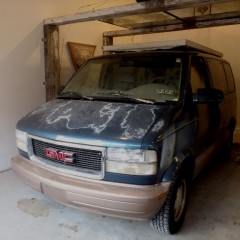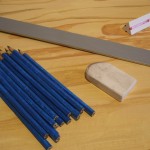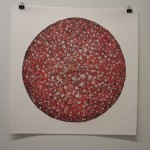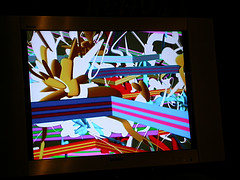
I’ve done a few studio visits with young artists and usually at some point they say, apologetically, pointing at their easel- or pedestal-sized pieces, “These are small works. What I really want to do is something big. ”
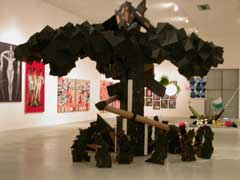
John Prull, Untitled (new totems). Big bird and chicks. made of cardboard, latex paint, screws, twine. $1,000. (a steal!)
Small, I reply. Small is the way to go.
The Penn MFA exhibit at the Icebox Project Space is full of really big works. Of course when you’re in graduate school is probably when you exercise your need for big and stretch the 72″ canvases and make the space-grabbing installations. You don’t bat an eye, you just do it.
While a number of the big works look right in the enormity of the Icebox I have to say that the imagery didn’t need to be that big to be right for that space. Small works quite well, too, in an enormous space.
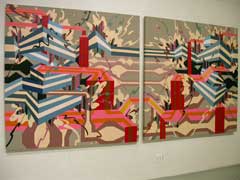
Nathan Wasserbauer, Everything is Expendable, 72″ x 144″ x 1.5″
The show’s video animations by Philip Adams, Ian Eckert and Nathan Wasserbauer, are a case in point. Those artists had large works in the big hall and then had animated sequences playing on a small monitor in the anteroom (labelled The Drawing Center.) All the imagery looked spectacular in small, intimate scale.
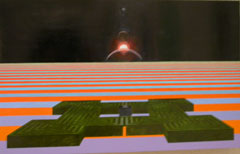
Hunter Stabler, Into the Heart of the Flat Vortex: No Time for the Sunshine Date, oil on wood.
Of course animation has the added charm of motion — and here — because they’re so well done — the whiz bang factor. But really, unless you’re making Roden Crater and have celestial vaulting on your brain why not go with a scale that conveys intimacy if your subject matter works on an intimate scale. If your work looks great in a sketchbook, chances are you’ve got works whose translation to small scale will be wonderful.
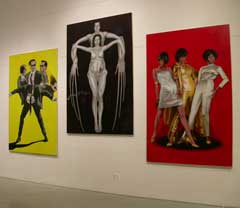
Ivanny Pagan, The Foundation, oil on canvas. 96″ x 60″ each panel. One of the pop culture influenced paintings.
On another note, I want to recommend Edith Newhall’s reviews in today’s Inquirer. However, I will disagree on this one point. Edith says about geometric abstraction that it’s not the hot ticket for young artists. And she says this in the context of seeing the Penn MFA show at the Icebox.
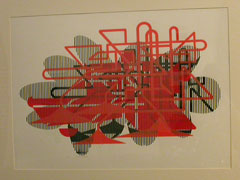
By Ian Eckert is what my notes say…but I’m thinking that may not be right. Maybe it’s Nathan Wasserbauer?
I think that given the small number of painters in the show there is a high proportion of artists making what can be construed as geometric abstraction. Nathan Wasserbauer, Ian Eckert (in a drawing), Andrew Graham and Hunter Stabler make works that are abstract and have geometric references.
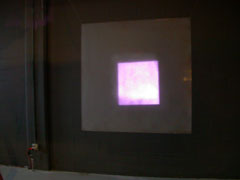
It’s not a painting but Jonathan Cancro’s The Eye, a video projection on plexi, 8 minute loop, is a geometric projection. Cancro is the one who told us he was going to hear James Turrell.
That abstract work is being made at all these days with the prevailing wind pushing ever towards imagery and pop culture is a testament to the satisfaction artists find in making it. Gestural abstraction is lacking here. But abstraction using some kind of non-math-based geometric shape making is definitely a presence in the show.
See Libby’s post for more and see my flickr set for more images. Here’s more about the show, which is up to June 5. And the students are providing a tour of the show on SATURDAY/JUNE 3, 2006 AT 12:00 NOON — with light refreshments.



